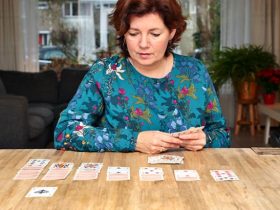If you want to get into gardening, you’re probably wondering which types of flowers you should try your luck with. For a novice gardener, this question can be quite overwhelming because of the sheer number of available choices.
Luckily, this article is here to help you figure out the best flowers you can pick. From long-blooming perennials to short-lived but breathtaking annuals, here are some of the best types of flowers you can grow in your garden.
The Best Types of Flowers to Grow: An A to Z List
1. Amaryllis (Hippeastrum)
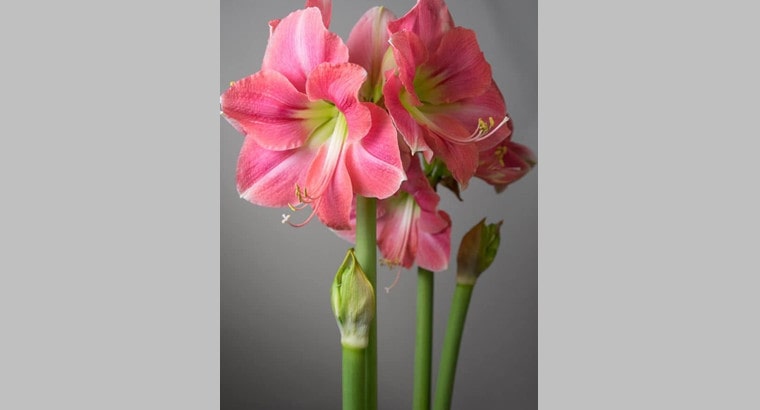
Image source: Pinterest
Amaryllis blooms once a year during the winter holidays. As such, it will give your garden some color during the bleak winter months. This flower comes in a wide range of shades, from white and yellow to orange and red.
You can grow this plant both outside and in a pot inside. It makes a great addition to different flower arrangements, especially to wedding bouquets.
2. Asters (Astereae)
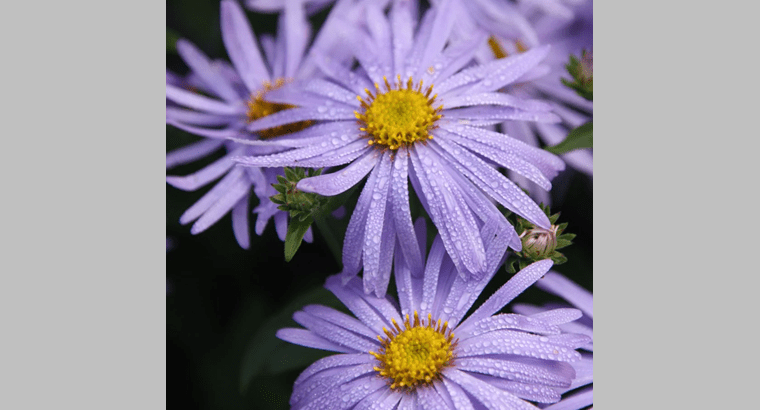
Image source: Pinterest
With their cheery yellow centers and delicate light petals, asters resemble daisies. However, while daisies have white petals, asters can come in pink, yellow, violet, red, and purple.
You can expect asters to bloom in late summer and last through the middle of fall. When you cut them and arrange them into a bouquet, the flowers can survive for about 10 days.
3. Azaleas (Rhododendron)
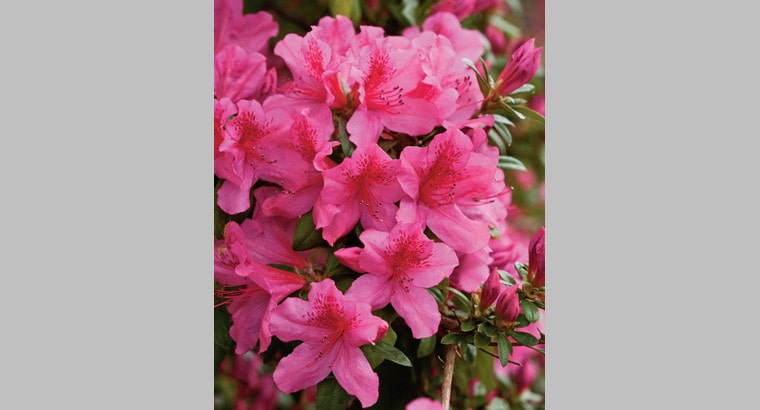
Image source: Pinterest
Azaleas are shrubs that can make your garden look rich during all four seasons. They bloom in spring and early summer and come in just about any warm color you can imagine.
Once the flowers disappear as summer kicks off, the foliage takes center stage. It is deep green and hardy, meaning that it will stay healthy no matter how cold it gets outside.
4. Baby’s Breath (Gypsophila)
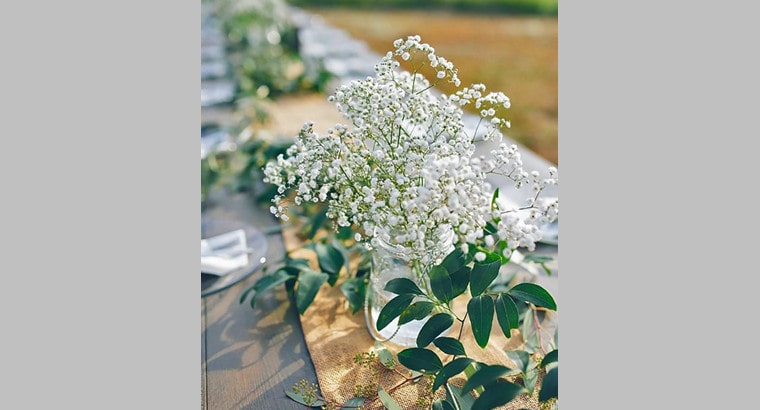
Image source: Pinterest
Baby’s Breath is a great filler flower for hanging baskets. It is small and neutral enough not to overshadow the flowers in the center but still pretty and interesting enough to be noticeable.
These flowers bloom in the summer, and you can enjoy them at their most beautiful for about a month or two. They can last even longer if the summers in your area are mild.
5. Begonias (Begonia)

Image source: Pinterest
This evergreen perennial comes in many colors, including various shades of red, orange, purple, and pink. Based on the variety you pick, you can expect one or two blooms a year, in summer and/or fall.
Begonias are quite versatile, so you can grow them as garden plants, in hanging baskets, or keep a pot inside your home. The flowers are also easy to care for, only requiring some water once a week.
6. Bleeding Heart (Dicentra)
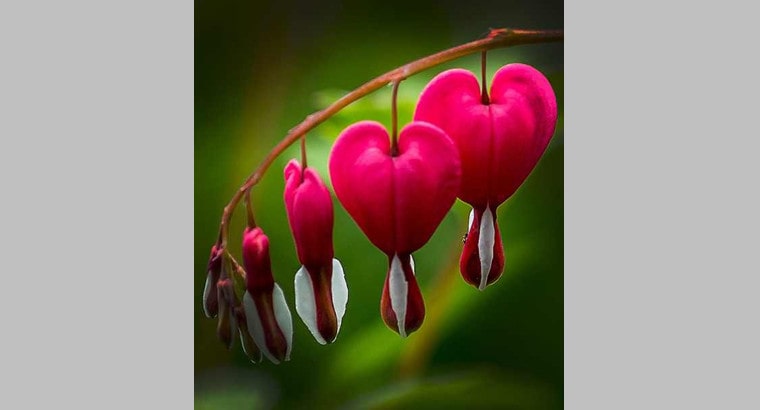
Image source: Pinterest
Dicentras are some of the most elegant-looking flowers you can find. They have thin but sturdy arching stems, on top of which perch locket-like buds. The petals are heart-shaped, and they can come in red, pink, and white.
These flowers bloom during spring, after which you get to enjoy the glossy green foliage. You should bear in mind that dicentras require quite a lot of water, which means that you will have to spend some time caring for their needs every day.
7. Bluebells (Hyacinthoides)
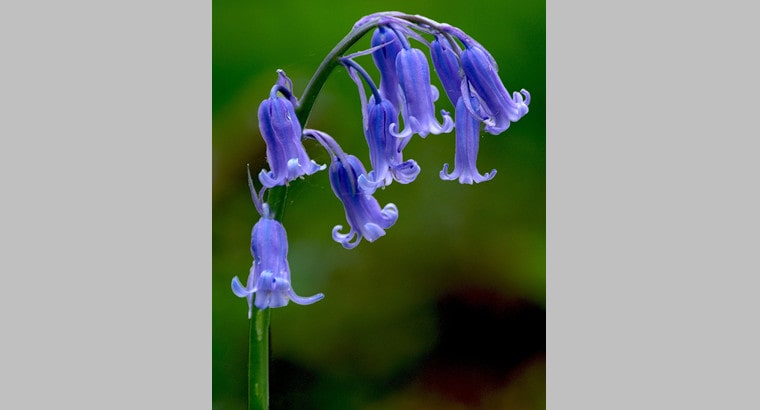
Image source: Pinterest
Though they are called bluebells, these flowers can actually be pink, purple, and white as well. The bell-shaped blooms will fill your garden with a sweet fragrance throughout spring.
Bluebells are a great choice if you feel like your garden or hanging basket needs some bold color. Watering them once a week will be enough, as the flowers do not require too much moisture.
8. Bougainvillea (Bougainvillea)
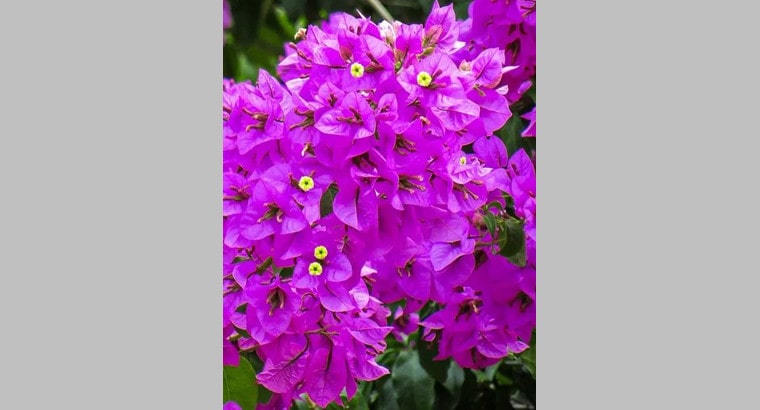
Image source: Pinterest
If you want flowers that will bloom for as long as possible, bougainvilleas are the way to go. You can enjoy these flowers during spring, summer, and fall.
Although the petals are quite pretty and bell-shaped, what most people admire about these flowers are their showy bracts. The leaves can be pink, yellowish, purple, or white. Together with the deep-green foliage, they make bougainvillea flowers look striking and unusually attractive.
9. Calla Lilies (Zantedeschia Aethiopica)
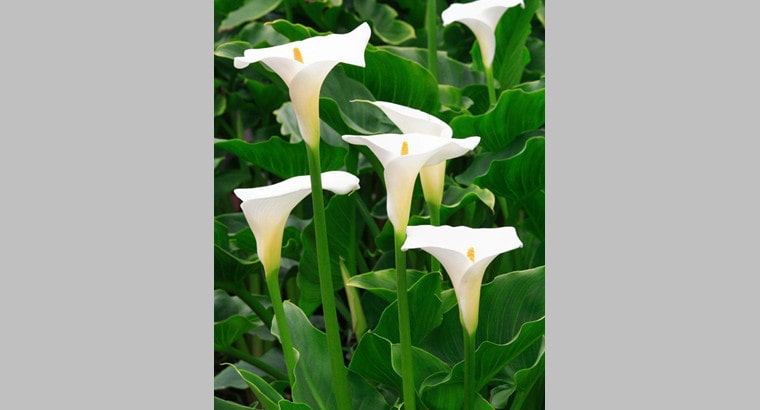
Image source: Pinterest
The most recognizable parts of these flowers are their trumpet-shaped petals. They make them look elegant and delicate, although they are quite sturdy. This variety of lilies comes in purple, yellow, pink, and white.
You can expect calla lilies to bloom during the summer. For the rest of the year, your garden will look rich and sophisticated because of the plant’s glossy green foliage.
10. Camellias (Camellia)
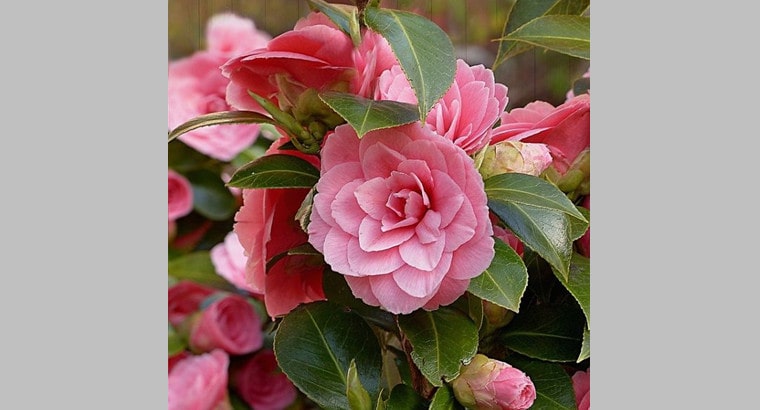
Image source: Pinterest
Vigorous and fragrant, camellias have 10 petals and 12 petaloids. Thus, they appear full and will make great centerpiece flowers in any cut arrangements or hanging baskets.
Since there are many varieties of camellia, you can find one to please just about any size or shape requirement you might have. The colors are just as diverse — you can choose between pink, yellow, white, purple, and red.
11. Chrysanthemums (Chrysanthemum)

Image source: Pinterest
Chrysanthemums are typical signs of fall. Not only do they bloom during this season, but they also come in a palette of warm autumn colors. The most popular ones are auburn, red, and deep purple.
The biggest advantage of these flowers is that they start blooming just as most other flowers start declining. Include them in your garden, and you’ll ensure that it always looks colorful.
12. Daffodils (Narcissus)

Image source: Pinterest
Not many flowers will bring as much cheer to your garden as daffodils. They feature delicate yellow flowers on top of thick stems, and the buds can come in a wide range of sizes.
Though daffodils do not last as long as most other spring bloomers, they will leave a mark on your garden regardless. Apart from their appearance, they are also known for their sweet and zingy fragrance.
13. Daisies (Bellis Perennis)
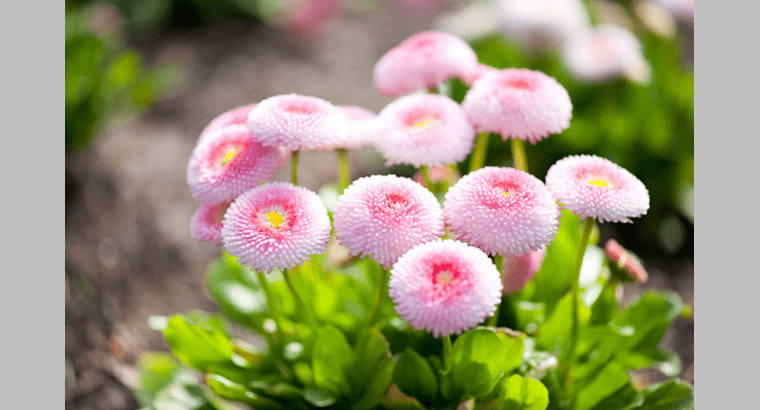
Image source: Pinterest
Every garden needs at least one classic flower. As far as beauty and ease of care are concerned, daisies are the best classic choice you can make. Though the most popular variety is white, you can also plant those with pink or yellow petals.
Once you plant daisies in your garden, they will pop up each year to announce the coming of spring. Since they do not do well in scorching weather, they will decline as summer progresses. However, if you live in an area with mild summers, you can expect them to stick around for longer.
14. Delphiniums (Delphinium)
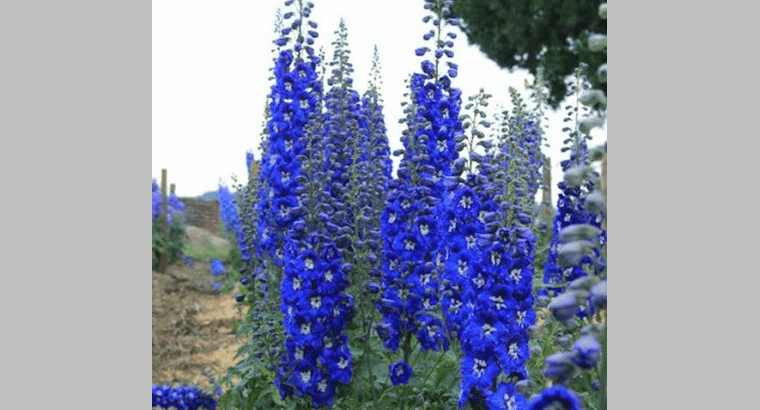
Image source: Pinterest
Beloved by florists for their sturdiness and unusual beauty, delphiniums are mid-sized perennials with spiky flower buds. You can find these flowers in blue, violet, white, and light purple.
Based on what you need the flowers for and where you plan to plant them, you can choose differently sized varieties. Dwarf flowers will be a better choice for flower pots, hanging baskets, and pathway borders. On the other hand, varieties that can grow to be over a foot tall are a good option for garden borders.
15. Dianthus (Dianthus)
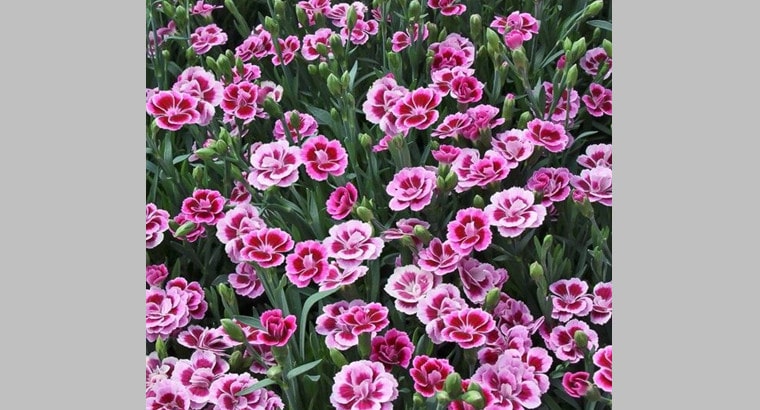
Image source: Pinterest
Dianthus is a family of evergreen perennials that come in many shapes and colors. Some varieties bloom once in the spring, while others may also flower a second time in the summer. You can pick between various different shades, from all warm hues to bicolor options.
The most popular members of the dianthus family are carnations, mostly because of how low-maintenance they are. You can enjoy these colorful flowers year-round, and they can adapt to almost any conditions.
Carnations have full, fringed petals that perch upon a solitary stem. While they can make wonderful additions to all hanging baskets, they shine the brightest if you plant them in the ground and let them spread around your garden.
16. Forget-Me-Nots (Myosotis)
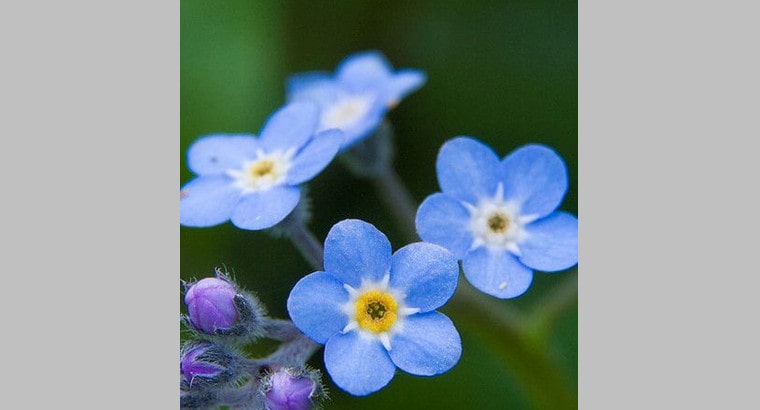
Image source: Pinterest
Most people have played with these flowers as children, which is why they love including them in their gardens. However, forget-me-nots don’t have only nostalgia going for them. They are delicate, pretty, easy to care for, and they bloom in thick, colorful clusters.
Forget-me-nots will attract many butterflies and bumblebees to your garden. These insects will then pollinate the flowers and help them spread around more easily. The only real downside to these flowers is the fact that they only bloom for three to four weeks each year. However, their beauty more than makes up for it.
17. Freesias (Freesia)
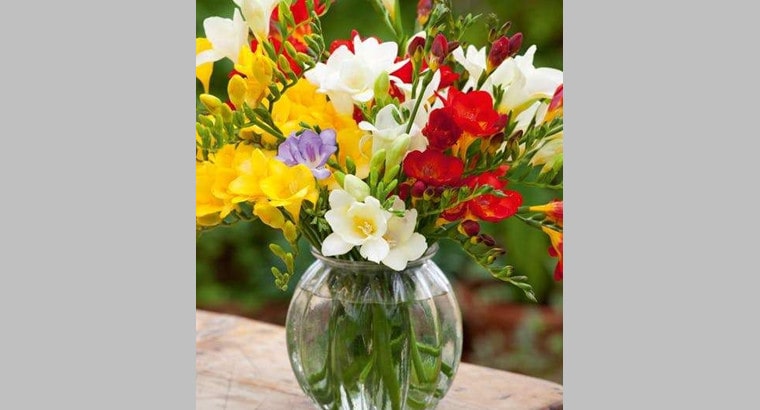
Image source: Pinterest
No flowers on this list are available in as many colors as freesias. You can find these beauties in any shade you can think of, from white and yellow to purple and blue. There are even bi- and multicolored varieties, although they are a bit less common.
Regardless of which color you pick, freesias will always appear slightly glowy and translucent. Thus, these flowers are at their prettiest when sunlight hits them directly. Plant them somewhere where that will happen a lot to enjoy their unusual appearance.
18. Gardenias (Gardenia)
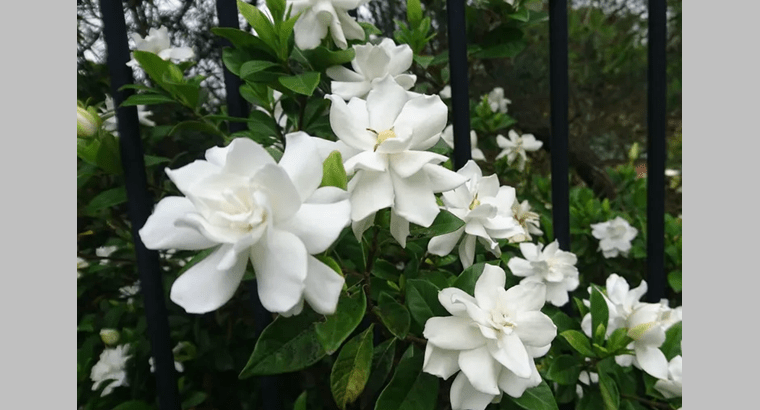
Image source: Pinterest
Most famous for their sweet fragrance, these shrubs are not the easiest flowers to grow and care for. They need partial shade and watering at least three times a week (if there is no rain). However, if you have the time and will to plant them, gardenias will make a wonderful addition to your garden.
Though you can find varieties in different colors, the most popular and classic one is white. The petals contrast starkly with the glossy green foliage, making for a sophisticated combination.
19. Gerberas (Gerbera)
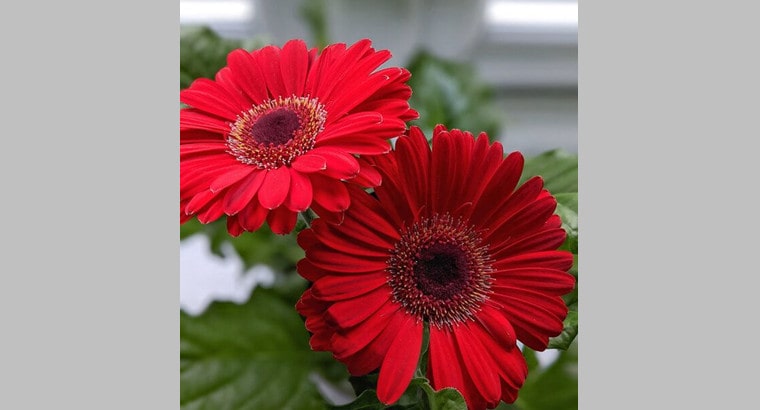
Image source: Pinterest
Gerberas are often called gerbera daisies, as the petal arrangement is quite reminiscent of the classic flowers discussed above. What draws most florists to this flower is how vibrant it is. You can find it in yellow, pink, orange, red, violet, and purple.
Gerberas are another long-blooming plant. Once the flowers appear in the spring, they stay until fall, making your garden look lively and rich.
20. Gladiolas (Gladiolus)
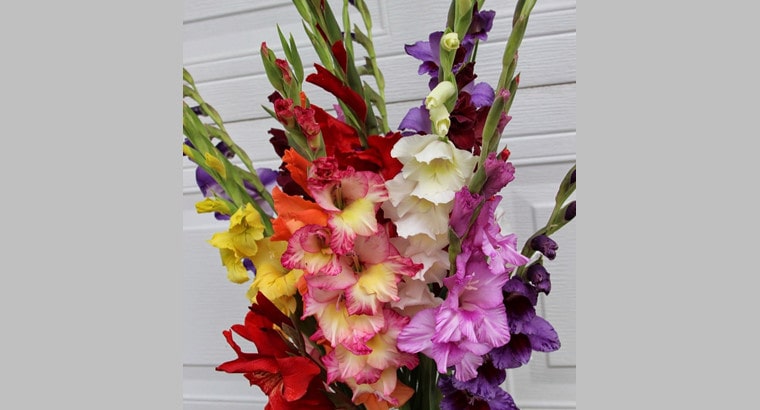
Image source: Pinterest
Gladiolas consist of long, thick stems with large flowers on top. The leaves are shaped like miniature swords, which gives the plant a powerful look.
Available in many shades, most gladiolas are actually bicolored. You can find combinations such as pink and white, violet and white, or yellow and white. The delicate appearance of the petals offsets the otherwise stern-looking plant beautifully.
21. Hibiscus (Hibiscus Rosa-Sinensis)

Image source: Pinterest
If you want something attractive and dramatic, planting hibiscus plants is definitely the way to go. Their deep-red petals and hardy foliage will make a nice addition to an otherwise neutral garden.
Planting hibiscus has yet another advantage. You can use the flowers and leaves to make tea after you dry and crush them. A cup or two might bring you comfort during fall and winter when the red flowers will be long gone.
22. Hydrangea (Hydrangea Macrophylla)
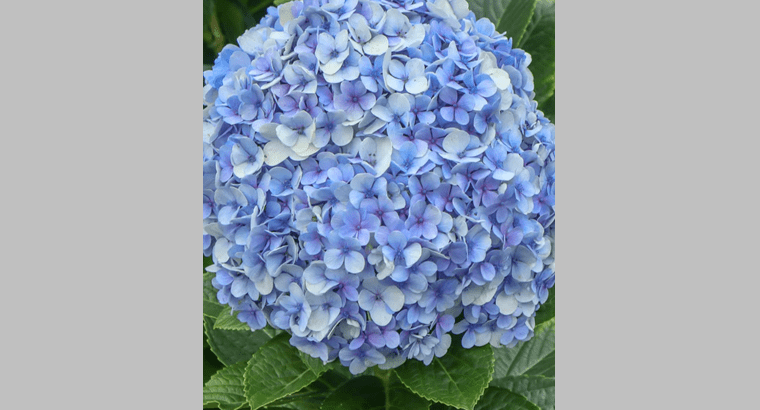
Image source: Pinterest
Hydrangeas grow in large clusters of small flowers with heart-shaped petals. You can find varieties in soft pink, blue, violet, and even green. The plants only require watering about once a week. Otherwise, they are pretty low-maintenance.
These flowers are an excellent choice for pathway borders and hanging baskets. Plant them with some smaller and more neutral types of flowers to get an aesthetically pleasing combination.
23. Impatiens (Impatiens)
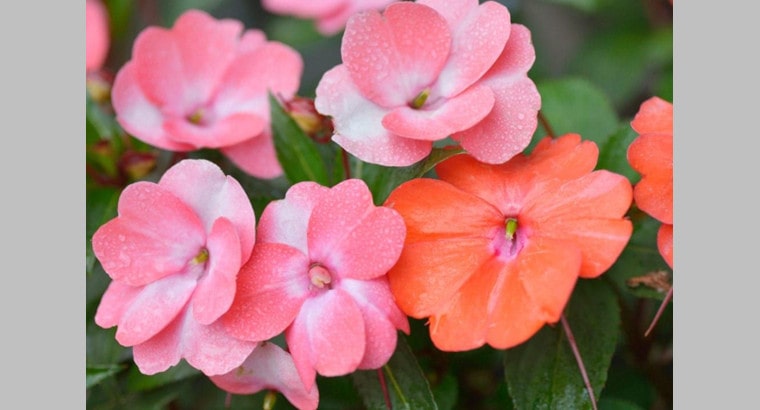
Image source: Pinterest
What impatiens lack in size, they more than make up for in their brightness and cheeriness. The available colors include violet, purple, pink, red, and blue. Some of them are also double bloomers.
If you keep this flower in a pot, it can be around all year long. Simply take it inside as soon as temperatures drop and fall is well underway. Inside, just keep caring for it the same way you did before, and you’ll be good.
24. Iris (Iris)
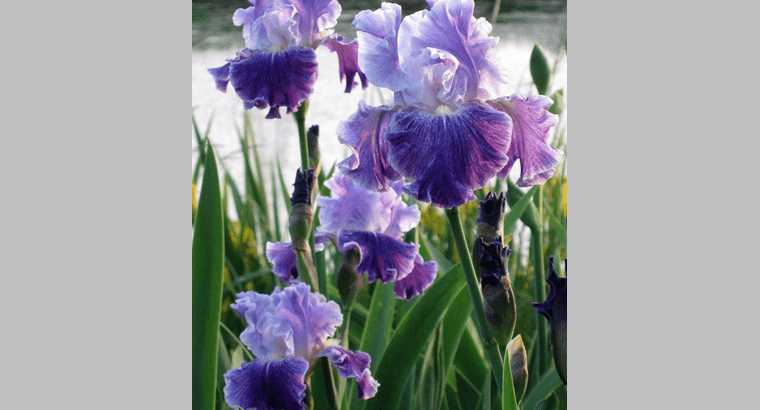
Image source: Pinterest
Irises bloom in spring, and they are around for a little more than a month. There are numerous cultivars of this flower, each differing in height and flower size and shape. The most common colors you can find are white, purple, and yellow.
However, there are also options in blue, orange, and pink. Since they are less common, they are more expensive too.
25. Jasmine (Jasminum Officinale)

Image source: Pinterest
Jasmines are some of the sweetest-smelling flowers you can have in your garden. The best thing about the fragrance is the fact that it lingers in the air long after the flowers have stopped blooming.
Jasmine is easy to care for, and in return it will bring life to your garden. Delicate jasmine flowers bloom from spring to fall, attracting a wide range of insects, mainly butterflies.
26. Laurel (Laurus)
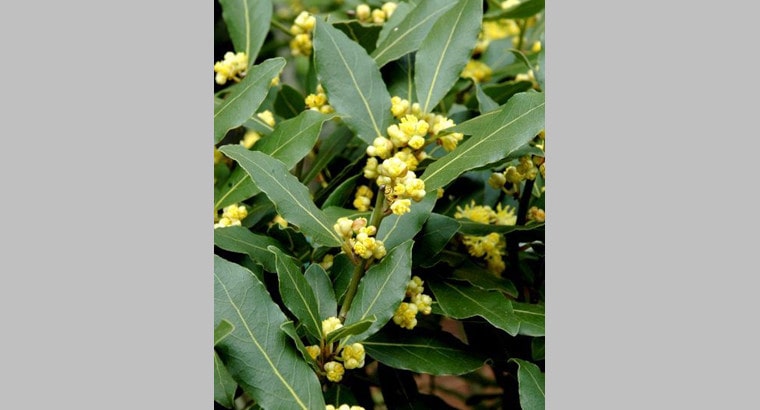
Image source: Pinterest
Native to the sandy Mediterranean, these shrubs require little water and can thrive even in the driest areas. Though the white flowers are pretty, the shrub is most famous for its fragrant foliage and dark, forest-green leaves.
Apart from smelling great, laurel leaves are also edible and can make a great addition to different meals. That is yet another reason to plant this versatile flower.
27. Lavender (Lavandula Angustifolia)

Image source: Pinterest
Lavender is an aromatic herb that many people don’t think of when planning gardens. However, it is a great choice because it requires virtually no care and will fill your garden with the most incredible fragrance.
For centuries, lavender has been used in aromatherapy. It brings calmness and induces positive thoughts, which is why you should consider keeping at least a pot of it around your home.
28. Lilies (Lilium)
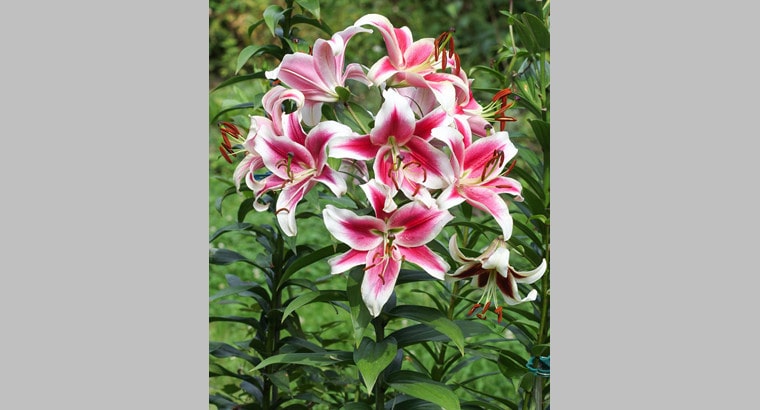
Image source: Pinterest
You can recognize lilies by their wide petals and prominent stems. Most varieties bloom year-round, and there are over ten color options to choose from.
Lilies are quite easy to grow once you establish them, requiring only some water once a week. They are more suitable for garden planting than for hanging baskets, as they need a bit more space to grow comfortably.
29. Lotus (Nelumbo)
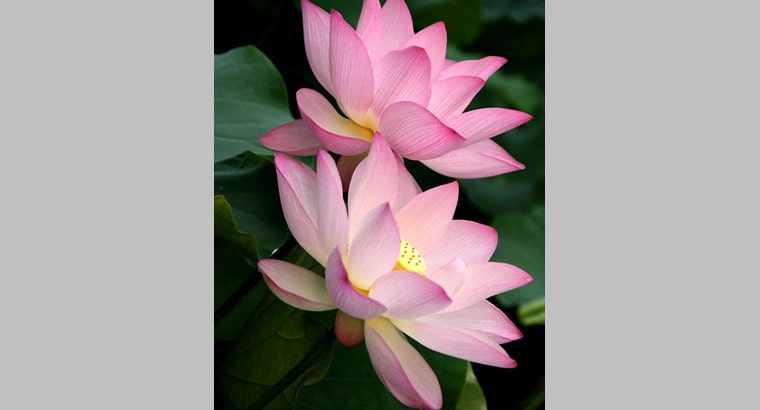
Image source: Pinterest
Lotuses have an iconic shape that is as sophisticated as it is interesting. The petals come in a range of colors, but the most popular is classic white. These beauties bloom in summer.
While lotuses are showy and will make a dramatic addition to your garden, they are not as long-lasting as most other options on this list. What’s more, you will have to build a small pond in your garden, as the flowers need to be submerged in water to thrive.
Thus, you should think about whether the flowers are worth your money and whether you have the time and space to care for them.
30. Magnolia (Magnolia)
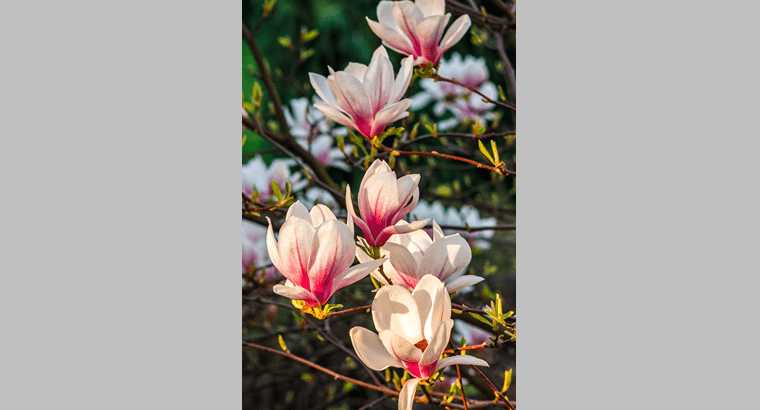
Image source: Pinterest
Magnolia is an iconic flowering tree or shrub. Depending on the variety you go for, it can be either deciduous or evergreen. Either way, you’ll get fragrant flowers whose delicate white petals will make your garden look dreamy.
Though the flowers are present only in spring and summer, this tree is a great option for all seasons. The foliage will keep it looking fresh and rich, even when the temperatures dip.
31. Marigolds (Tagetes)

Image source: Pinterest
These ruffled flowers are some of the most aesthetically pleasing plants that you can pick for your garden. The most striking varieties are those in orange and red, but those in yellow, pink, and purple are also available.
Bold colors of marigold flowers go perfectly with the summer heat, which is when they bloom. In addition, marigolds are easy to care for as they require direct sunlight and little water.
32. Orchids (Orchidaceae)

Image source: Pinterest
The orchid family is the biggest flower group in existence. Thus, it is not surprising that they are available in an astonishing number of sizes, shapes, and colors. This flower symbolizes refinement, fertility, and love, which makes it a great and meaningful addition to any garden.
Though they look grandiose and delicate, orchids are actually really low-maintenance. You will only need to water them once a week if there is no rain.
33. Pansies (Viola)
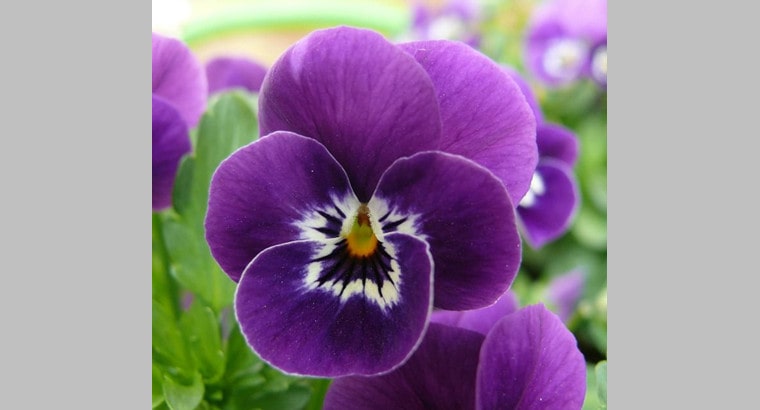
Image source: Pinterest
Known for their flat petals with rounded edges, pansies come in just about any color under the sun. They bloom in spring and are an excellent choice for pots, hanging baskets, and pathway borders.
As pretty as they are, pansies do require more care than most other flowering plants on the list. They need rich and moist soil to develop well, and they cannot survive if they are in the shade for the better part of the day.
34. Passionflower (Passiflora)

Image source: Pinterest
If you want a flower that will look unique and unlike anything else in your garden, passionflower is indeed the best choice for you. It features fringy petals cluttered around a sophisticated and complex center.
The flowers bloom in summer, after which they turn into egg-sized fruits that are orange in color. Though the fruits are edible, they are not too tasty. Those who have tried them compare the taste to blackberries, only less strong or sweet.
35. Peonies (Paeonia)
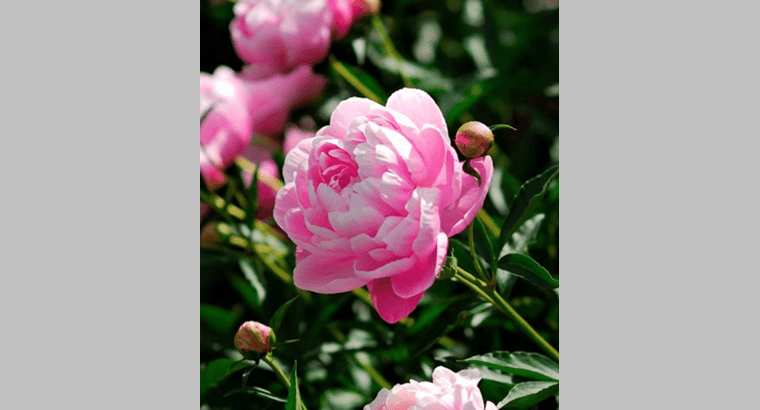
Image source: Pinterest
Apart from the lovely double-blooming flowers, this shrub produces exquisite green foliage that is present year-round. The flower is fragrant and easy to care for, especially if you put it in a hanging basket.
Peonies are yet another showy and dramatic option you can add to your garden, but it is best to combine them with other, more neutral flowers. That way, they will not be too overwhelming.
36. Petunias (Petunia)
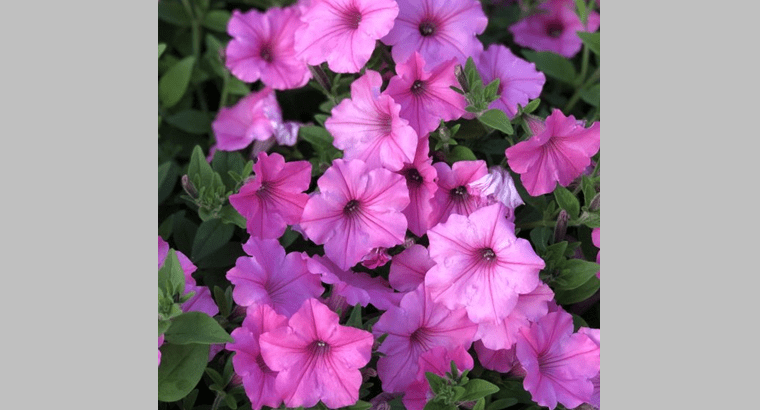
Image source: Pinterest
Petunias have iconic, trumpet-shaped petals. They come in many colors, from solids to patterns. You can even find black varieties, which can be a great choice if you are going for a black and white aesthetic in your garden.
A great thing about petunias is that they bloom from spring through fall. Thus, they will keep your garden interesting and colorful for months.
37. Phlox (Phlox Paniculata)
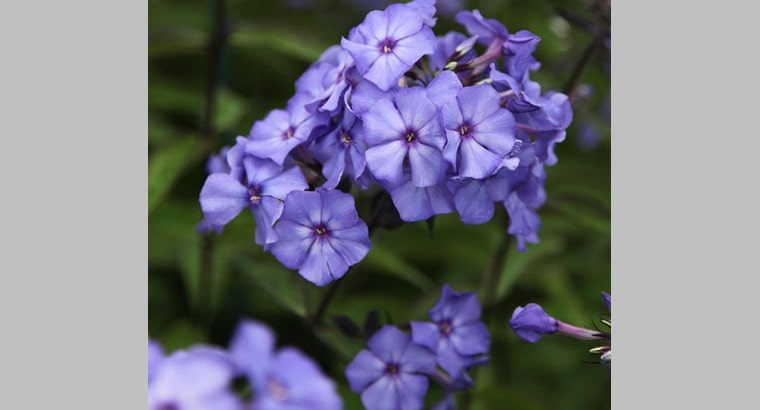
Image source: Pinterest
These summer-blooming flowers are perfect options for a highly humid area. They are resistant to mildew, meaning that they are able to survive where most other flowers wouldn’t.
Phlox is available in many colors, but the most common ones are different shades of purple and red, as well as white and violet. The colors are so vivid that the flower is also known under the name Bright Eyes.
38. Poppies (Papaver)
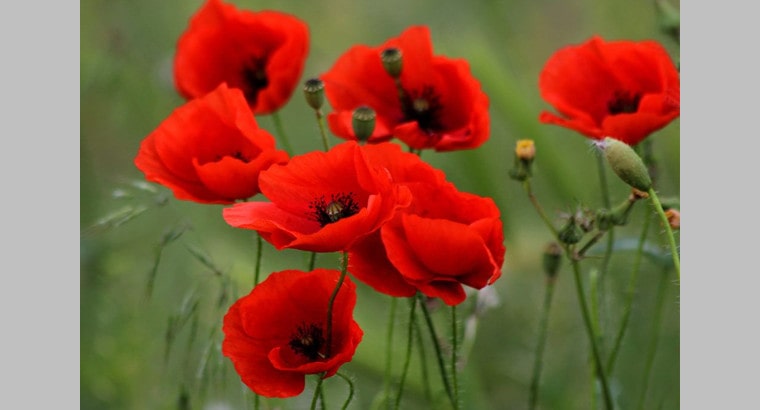
Image source: Pinterest
Poppies have unique petals that are slightly translucent and resemble crepe paper. The multicolored flowers sit atop slender stems, and the whole package contrasts with the shrub-like foliage beautifully.
You can enjoy these flowers from late summer to late autumn. However, the plant is just as beautiful when it is not in bloom, so it makes for a great investment for your garden.
39. Primrose (Primula Polyantha)
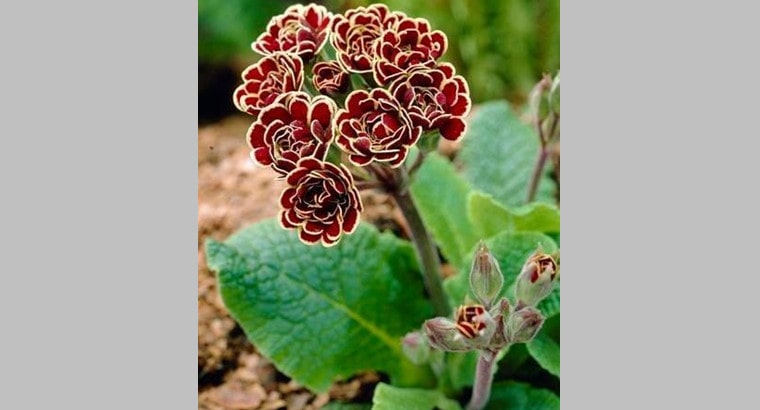
Image source: Pinterest
Primroses are evergreen perennials that are prolific and reliable bloomers, regardless of the conditions you plant them in. The flowers are famous for their delicate and vibrant flowers that contrast an oval yellow center.
Primrose blooming is one of the first signs that winter is coming to an end. Thus, these flowers will bring you joy every year and help you welcome spring in the best way possible.
40. Ranunculus (Ranunculus)

Image source: Pinterest
This is one of the most elegant flowers you can pick. Ranunculus flowers have vivid petals that combine with long stems and glossy green foliage. Just like primroses, they also bloom in late winter, announcing that spring is near.
The true advantage of these flowers is the sheer number of color choices you can choose from. They are so varied that you can fill out an entire garden or hanging basket with just these flowers and still have it looking interesting and rich.
41. Roses (Rosa)

Image source: Pinterest
No matter how beautiful and fragrant the flowers on this list are, none of them can truly compare to the biggest classic of all: the rose. Available in a wide range of colors and shapes, roses make a great addition to gardens, especially if you place them near walls and fences.
It is important to mention that you will need to take extra care of roses if you do decide to plant them. You will have to fertilize and prune them regularly. What’s more, the foliage will grow too tall and might get out of control if you do not cut it every few months.
Still, the beauty of these flowers more than makes up for the fuss they require. If you have the time and means to care for them, you should definitely give it a go.
42. Sunflowers (Helianthus Annuus)

Image source: Pinterest
This fast-growing perennial is most famous for its beautiful yellow petals centered around a brown or dark-yellowish center. Sunflowers are a large and bold choice for your garden, and they will surely get noticed by anyone who passes by.
Since sunflowers can grow to be quite tall, it is essential that you ensure they have enough space to do so. They bloom in summer and fall, and they require direct sunlight.
43. Tulips (Tulipa)

Image source: Pinterest
Tulips are a perfect choice for spring gardens, as they bloom throughout the entire season. You can find varieties in just about any color, from white to deep purple. There are even some bi- and multi-colored options.
The greatest thing about tulips, aside from their timeless beauty, is how affordable they are. You will be able to fill your garden with them and still have more than enough money left to buy some nice companion plants.
44. Violets (Viola Odorata)
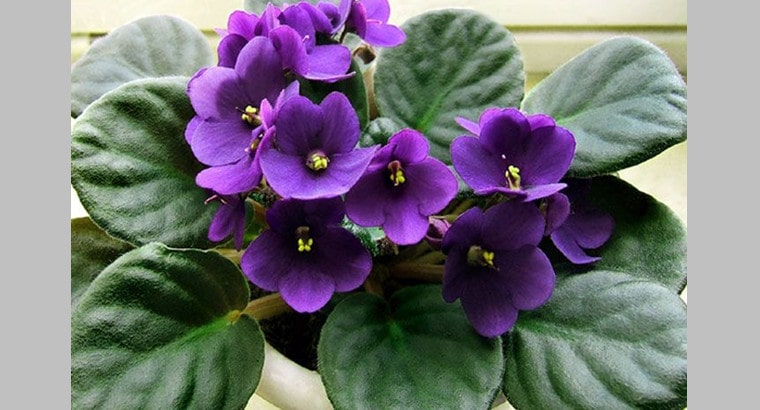
Image source: Pinterest
Violets are some of the most reliable perennials you can choose. Once you plant them, they will bloom each spring without needing any care from you, be it fertilization or watering.
As their name suggests, these gentle flowers are usually violet. However, there are certain varieties with white and yellow petals as well.
45. Wisteria (Wisteria Floribunda)
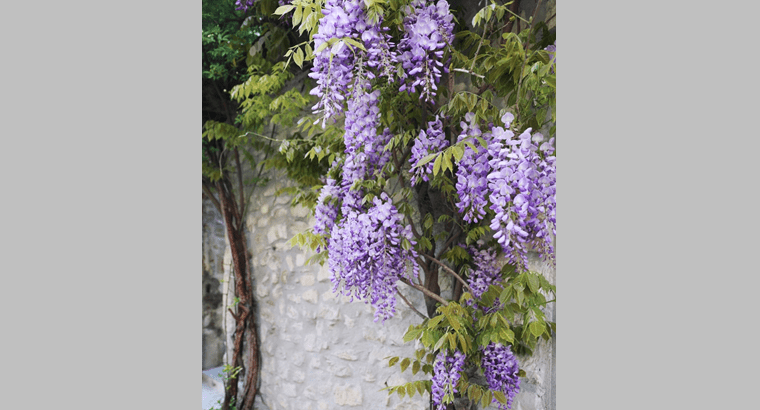
Image source: Pinterest
This is a vigorous climbing plant that blooms in late spring and early summer. The vivid violet flowers turn into full buds as autumn approaches, and they stick around throughout winter as well. These buds provide a great source of food for birds during cold winter months.
Wisteria is drought-tolerant, so you can plant it even if your soil is poor or only moderately fertile. The only thing you need to keep in mind is that it can grow to be up to 30 feet tall. Only plant it if you have enough space to let it develop fully.
46. Zinnias (Zinnia)
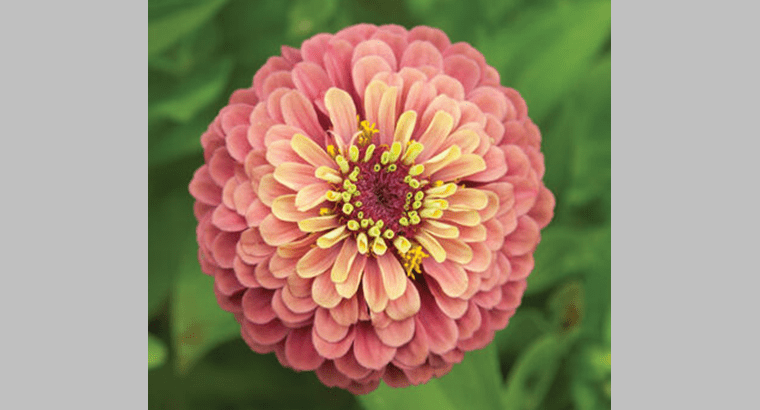
Image source: Pinterest
Zinnias are rewarding bloomers, as the flowers appear in summer and stick around until the first frosts. Based on your needs and preferences, you can pick between numerous colors and heights.
They can serve as border plants, edging plants in hanging baskets, as well as for window boxes and containers. Whatever you choose, these flowers will be incredibly easy to grow and maintain.



